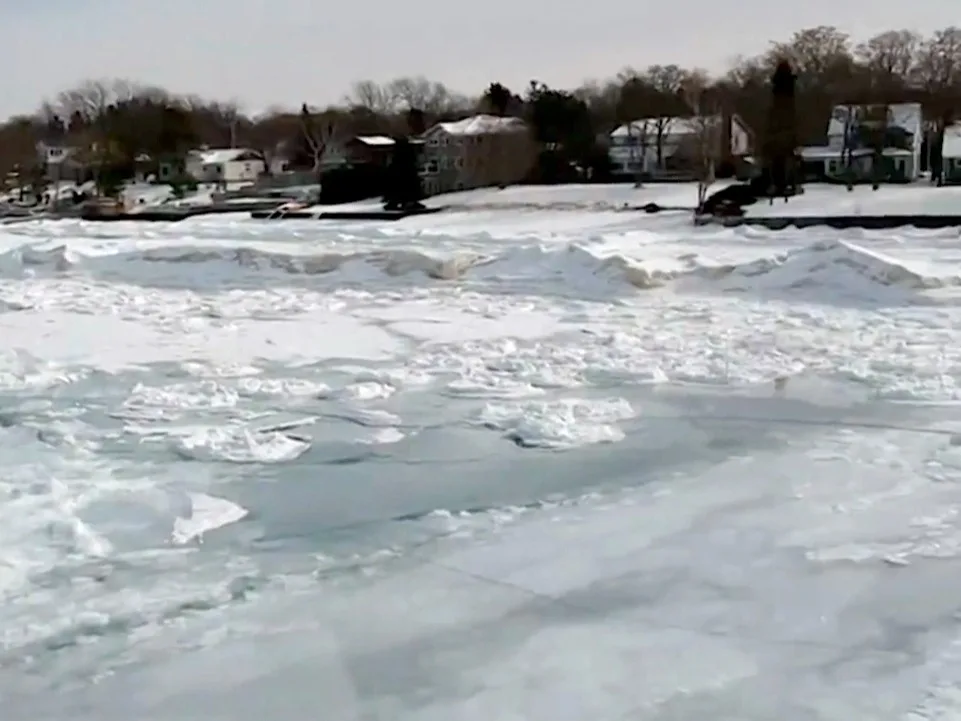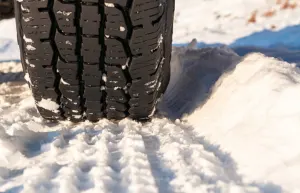
Stay away: Ice shelves pose serious threat with hidden dangers
Ice shelves have been sighted near the shores of the Great Lakes in recent weeks, prompting warnings from public officials about the dangers associated with them.
With a new year comes fresh warnings from officials about the dangers of ice.
As a result of recent warm temperatures and melting snow in the Great Lakes region, residents have been warned to stay away from the dwindling ice shelf along Lake Michigan. It was reported that some Michigan residents were spotted on the ice shelves, leading to cautionary words from public officials.
SEE ALSO: How to survive a fall through the ice this winter
“Take pictures, enjoy it from the beach, but definitely don’t get stranded out there," Lincoln Township fire Chief Brandon Chiarello told Harbor Country News in an interview.
Because rescue crews have to follow proper safety precautions before venturing out onto the ice shelves, St. Joseph public safety director Steve Neubecker said a rescue is taxing and puts others at risk.
Ice shelves were also sighted along Lake Erie in late December 2022, following several days of cold and stormy weather. Photos and videos were circulated on Twitter on Wednesday, Dec. 28 and Thursday, Dec. 29, showing the unique but hazardous formations.
In early December, ice shelves and their hidden "volcanoes" were photographed on Lake Superior.
As well, Halton police sent out a tweet on Dec. 28 with a graphic attached, warning people to avoid frozen creeks and ponds.
What causes ice shelves? Hidden holes are ice volcanoes
According to Melinda Singh, a meteorologist at The Weather Network, ice shelves form as strong winds push the waters of the Great Lakes to shore, then freezes upon impact. This is a continuous process that "builds each time."
"Ice shelves protect the shorelines from erosion, but are also very dangerous since they are not solid structures," said Singh. "Many ice shelves are hollow underneath and tend to form on the lake itself. It is very unsafe to walk on because you could step on a thin patch and fall right into the water."

(Coffee Cafe)
What people may not realize about the shelves is that the hidden holes on them are called ice volcanoes.
What are ice volcanoes? They are a conical mound of ice that forms at the edge of an ice shelf, said Matt Grinter, a meteorologist at The Weather Network.
"As waves hit the leading edge it carves through the ice, ejecting water upwards into the air. As this process continues, the ejected water continuously freezes, growing the ice volcano larger with each 'eruption,'" says Grinter.
As the ice volcanoes grow, they can develop a thin layer of ice at the opening. This makes it dangerous as it's hard to know where the opening is, Grinter said, noting the thin layer of ice can give way under very little weight. "This can lead to people plunging down into a six-to-10-foot-deep hole into the frigid waters," he said.

(Mark Robinson/The Weather Network)
SAFETY TIPS FOR WALKING ON THE ICE
If you're venturing out on the ice, the City of Hamilton offers safety tips.
Never go alone
Keep a close eye on kids and pets
If someone falls through the ice, do not go in after them. Call 911 and try to reach them with a pole, stick, rope, or hose. Likewise, do not enter the water to try to rescue pets
If you fall in, stay calm, get your arms onto the ice shelf and shout for help. Kick your feet, crawl with your arms, and roll to safety.
If you do fall through the ice, the Canadian Red Cross Society has a number of tips that can help you survive it, found here.
WATCH: An "ice volcano" bursts along the frozen shores of Lake Superior
With files from Cheryl Santa Maria, a digital journalist at The Weather Network.
Follow Nathan Howes on Twitter.










